How to Design Your Nursery
Make this space work for your unique needs.
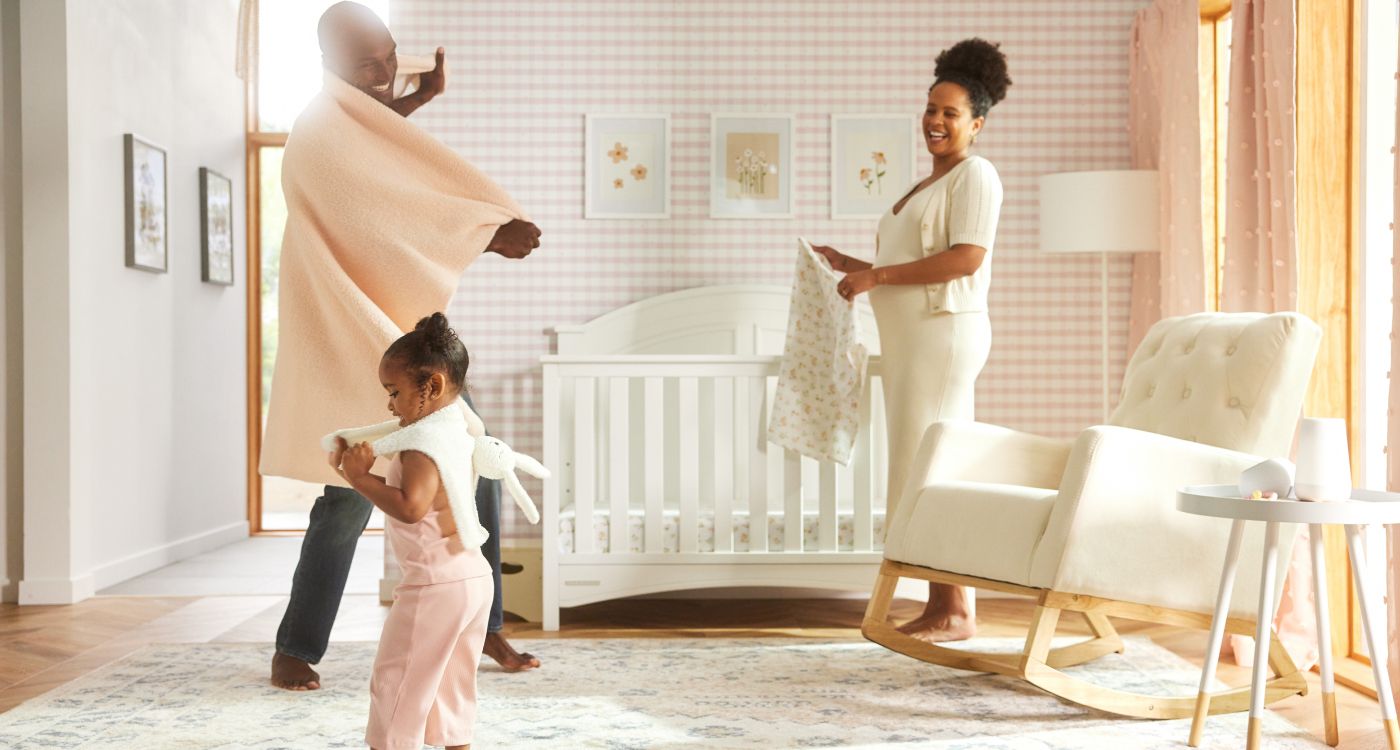
What to Consider
When preparing for baby's arrival, one of the (many) things you'll be thinking about is setting up your nursery. Of course, there are the basics like a crib, changing table and glider. But then there are products that just might make parenthood easier–like sound machines and baby monitors or blackout shades and nightlights.
In This Guide
What You Need
Tips & Tricks
Looking for more recommendations?
Check out our complete Baby Essentials Checklist.
What You Need
Furniture
Start designing your space with the biggest items first. Identify where you want to place furniture and make sure you have enough space to move about the room while also having easy access to important items.
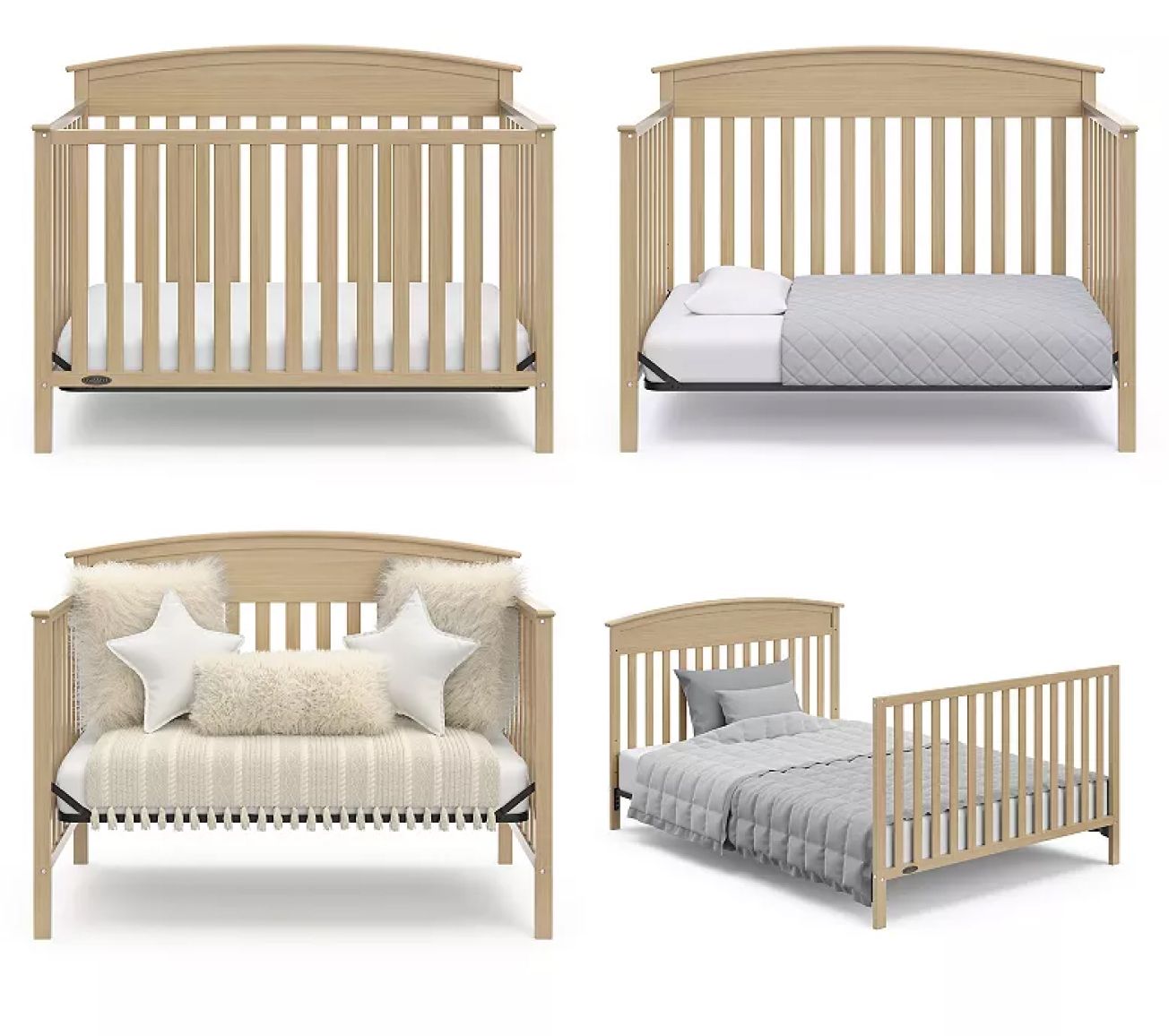
The Crib
Your crib will be the centerpiece of the nursery and set the stage for your nursery style.
Types of Cribs
As the name implies, these are full-sized, no-frill cribs that do not convert into any other type of bed. This is a good option if you plan to redecorate your child's room once they are out of the baby phase and may want different styles of furniture.
These are the transformers of cribs. They go from baby crib to toddler bed and sometimes even to a twin or full-size bed. Convertible cribs can cost more up front but might save you money in the long run as you won't need to purchase additional furniture as your child grows.
If your nursery is tight on space, consider a mini crib. These cribs are smaller than basic cribs and usually less expensive–but your baby will outgrow this faster so you will need to transition into another sleeping arrangement sooner. Mini cribs are an excellent choice if you plan to have your baby sleep in your room for the first few months
(optional) If you are choosing to have your baby room with you during the first few months-a bassinet is a compact, safe place for your baby to sleep. Considering newborns need to eat every 2-4 hours, keeping your baby close while you sleep will make night feedings easier.
Shop Cribs

Crib Mattress
The U.S. Consumer Product Safety Commission regulates the size of full-size crib mattresses, ensuring they safely fit all standard cribs. However, mini cribs may vary in size-so be sure to pay close attention to the required mattress size.
What to Consider
Shop Crib Mattresses
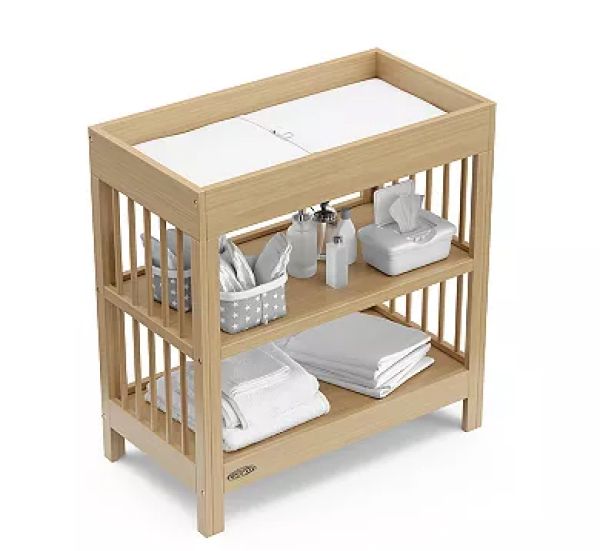
Dresser & Changing Table
You can select two separate pieces of furniture here or combine them into a single item to save on space. Just make sure to have a safe and easy spot to change diapers that is also easy to keep clean.
What to Consider
Shop Dressers & Changing Tables
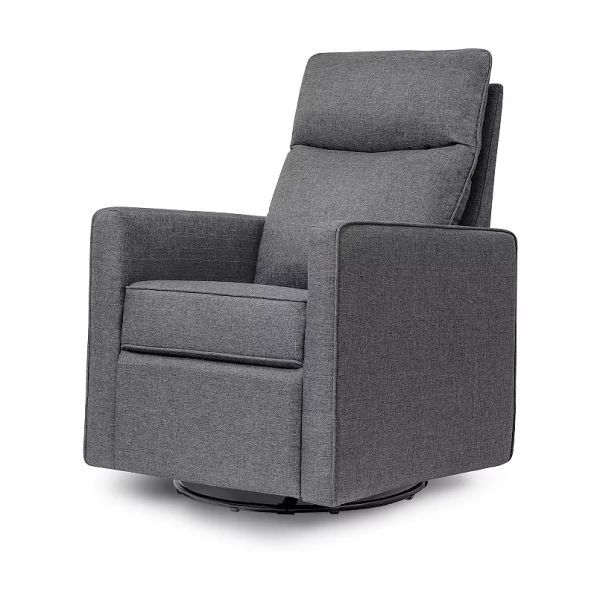
Rocking Chair or Glider
Between feedings, rocking to sleep and soothing a sick or overtired baby, you are going to spend a lot of time in this chair.
What to Consider
Shop Rocking Chairs & Gliders
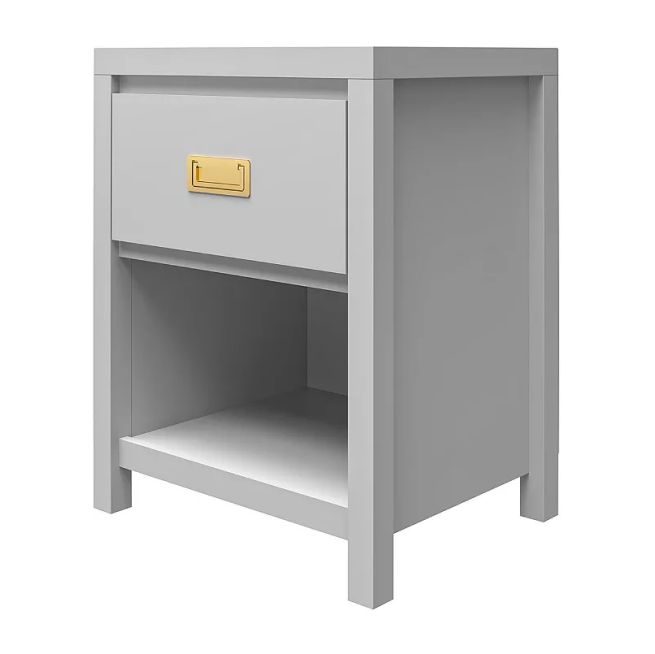
End Table
While you're in the rocking chair or glider, you'll want a surface to place empty bottles, keep pacifiers on hand-or stash a glass of water for yourself to stay hydrated. An end table is an easy choice-but if you don't have space, you can dedicate part of a bookshelf or an extra wide windowsill instead.
Shop End Tables
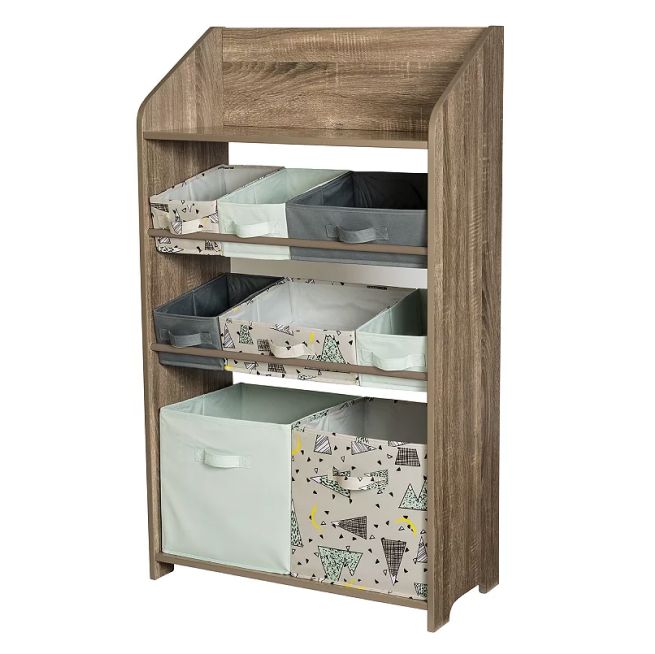
Bookshelf & Storage
(Optional)
Keep your nursery organized with shelving and storage. Babies will have a lot of things. Rattles, pacifiers, teethers, stuffed animals, toys, books, blocks and stackers. The list goes on. Though you won't need much at first, consider where you want to keep your baby's toys and how to stay organized. Cubed shelving systems that are lower to the ground are great when your baby gets older and wants to pick out items themselves.
Shop Bookshelves & Storage
Back to Top
What You Need
Bedding & Decor
Decor and bedding are a great way to personalize your nursery and they are easy to change out as your baby grows and starts to develop their own preferences. You can create a theme or color palette-or mix and match items that bring you joy.
Why? Diapers leak (and blow out) while babies are sleeping. Though you may already have a spare set of crib sheets on hand, liquids easily soak through non-waterproof sheets.
Pro Tip Opting for blackout shades may help your baby nap better and sleep later in the mornings, particularly if your nursery has a lot of natural light.
Pro Tip Hanging a mobile above your crib is entertaining for your baby. Just be sure to hang it out of reach, especially as your baby learns to stand and grasp.
Back to Top
What You Need
Comfort & Safety
Pro Tip There are a few options to consider-an audio-only monitor or a video monitor that will also allow you to listen in. Some even connect to Wi-Fi to allow you to check-in while you're on the go.
Pro Tip Warm, soft white bulbs will be easiest on your baby's eyes. Amber and red bulbs are the best for night lights because they have a longer wavelength, making them less likely to disturb your baby's sleep cycle.
Pro Tip Try a noise machine with different sound frequencies, or one with a soothing light function.
Pro Tip Create the ideal sleep environment for baby with a cool-mist humidifier and air purifier. Both are especially crucial during the drier winter months.
Back to Top
Tips & Tricks
On a Budget
Designing a nursery on a budget doesn't mean you have to sacrifice on quality or style. The key is prioritizing multi-functional products that will grow with your baby-maximizing the value and making the space as beautiful as it is practical.
Set a Budget
Kids-particularly babies-are expensive. Figure out what you can spend on a nursery up front and make sure to include everything you want on your registry so that your village can help out.
Focus on Essentials First
Start with the items you know that you will absolutely need and add in select nice-to-haves as your budget allows. Also, don't worry about having everything on day one. You can gradually add items after your baby arrives and as you discover what would make the biggest impact in your life.
Select Simple, Neutral Furniture
Consider selecting items in neutral colors that will look just as great in a nursery as in a 10-year-old's room. Add personality through prints and colors on bedding and decor that can easily (and inexpensively) be changed out with time as your child develops their own tastes.
Double Duty Decor
Use books and toys that your baby will also play with to decorate. Hang shelves to display stuffed animals or your favorite books to create a charming, cozy space.
Key Items
Look for an option that comes with additional pieces to transform into a toddler-sized bed-and possibly even into a twin or full-size bed in the future. These may cost more upfront, but you'll save a lot of money in the long run.
This is another versatile product that can be used for both sleep and play-from birth to toddlerhood. It's also portable, making it convenient for traveling.
Pick a chair that would also look great in your living room, so that you can continue to use it once your little one outgrows nighttime feedings.
Back to Top
Tips & Tricks
Small Spaces
Your little one will fill your heart with love, but they don't have to fill your entire home with stuff! Here are a few tips to get creative with your nursery-and find multi-purpose products to maximize every square inch.
Make Furniture Multi-Task
Select furniture or larger items that can do two jobs. Add a changing pad to the top of a dresser. Use part of a bookshelf as your end table. Pick a glider with a reclining feature to avoid also needing a foot rest.
Measure Twice, Buy Once
Furniture can be inconvenient to return and when every inch counts, the last thing you want is a bulky item that just doesn't fit. Measure the room as well as any doorway that pre-assembled furniture will need to pass through. Use painter's tape to mark where large furniture items will go to get an idea of how the space will feel before you make your purchases-ensuring there's still enough room to move about and open doors.
Decorate Up
Use the full height of the room to decorate. This will free up space down lower for functional items while still giving you the opportunity to personalize the space.
Key Items
Opt for a compact crib that was designed for smaller spaces and can fold or roll from room to room.
Save space by looking for a dresser that doubles as a changing table with a tray and changing pad securely placed on top.
Make the most of your walls by using floating shelves to provide additional storage space-creating organization while still looking stylish.
This is the perfect place to store things like diapers, wipes and onesies without taking up valuable space.
Another two-in-one product that not only saves on cost-but reduces clutter by minimizing the number of devices taking up space in the nursery.
Back to Top
Tips & Tricks
Rooming for Multiples
While some products can be shared-there are certain items that you should plan to have duplicates of for each baby, which means it's also important to plan for storage solutions to keep everything organized.
You Will Be Outnumbered
Even with the most supportive family, there will be times when you are flying solo with your babies. Design your nursery with safe, happy places for baby (or babies) to settle while you tend to their sibling.
Layout Matters
If space allows, layout your nursery with the cribs on opposite sides of the room. This will help reduce distractions and minimize noise disruptions-because the last thing you want is for one baby to wake another during naptime or middle of the night.
Have Enough Seating
Make sure to select a glider or rocking chair with a wider seat that will accommodate you and two (or more!) babies at the same time comfortably. Also, consider adding an additional chair to the room for the times when you have an extra caregiver around.
Key Items
The American Academy of Pediatrics strongly advises that each baby has their own crib. If you're looking for a way to save space with multiple cribs-consider opting for mini cribs.
This is an option that would allow newborn twins to sleep next to each other-but in their own safe, secure sleep space.
You'll want a monitor that has two cameras with a split-screen view to let you keep an eye on multiple little ones at once.
This is a nursery favorite for many-but it's even more of a lifesaver for parents of multiples who are likely to wake each other up during the night.
Think of this as your second set of hands-especially during the first few months when the babies are too young to play on an activity mat. Consider having one for each baby.
It's challenging to get anything done with just one baby let alone multiples. Using a carrier will allow you to hold one child while still tending to the needs of another.
With twice as many clothes, diapers and more-you'll want to look for products that maximize your storage space.
To help things run a bit more smoothly, use drawer dividers to keep all of the tiny socks and onesies organized.
Back to Top
Tips & Tricks
Room Sharing
As a veteran parent, you're probably familiar with all of the gear needed for a baby. However, preparing for a new little one comes with additional considerations when they will be sharing a space with an older sibling.
Choose Your Timing Carefully
If separate bedrooms aren't an option, consider having your newborn sleep in your room (or even the living room) rather than your older child's room at first. This will make nighttime feeds easier for you and will allow your big kid to sleep uninterrupted when night feeds are most frequent.
Include Your Big Kid
Talk to your older kid about what sharing a room will mean well in advance. Give your older kid a sense of control and excitement by letting them pick out some of the new items for the shared space.
Protect Sleep (as much as possible)
Babies, toddlers and kids all run on different timetables. Set yourself up for success with items that encourage sleep and minimize disruption such as a sound machine, night light, blackout shades and a ready-to-wake clock.
Baby & Child Proof
Make sure the room is age-safe for both kids. Depending on the ages of your children, this may include using outlet covers, moving smaller toys out of reach (or out of the room) and installing furniture brackets amongst other things.
Stay Organized
Make sure each child has a dedicated space for their clothing-this will help make morning routines easier. Consider using drawer dividers for shared dressers and hanging shelves or stackable organizers to optimize closet space.
Key Items
Two cameras and a split-screen view will allow you to keep an eye on both kids.
This will be crucial in drowning out the noise when one child wakes up in the middle of the night crying.
This is a game-changer for parents. It will help your toddler understand when it's morning time-and encourages them to stay in bed until it's time to get up.
Back to Top